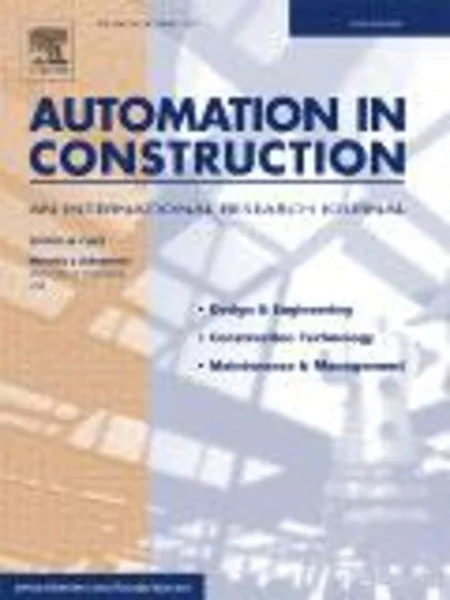-
technological advancements in synchronous collaboration: the effect of 3d virtual worlds and tangible user interfaces on architectural design
جزئیات بیشتر مقاله- تاریخ ارائه: 1390/01/01
- تاریخ انتشار در تی پی بین: 1390/01/01
- تعداد بازدید: 683
- تعداد پرسش و پاسخ ها: 0
- شماره تماس دبیرخانه رویداد: -
this paper presents and evaluates two current advancements of collaborative technologies for architectural design. the paper focuses on technologies that support synchronous design collaboration, in particular, 3d virtual worlds for supporting remote design collaboration, and tangible user interfaces (tuis) for enhancing co-located design collaboration. both technologies enable designers to collaborate by interacting with 3d models as the design representations. the paper analyzes the effect of these technologies on design collaboration and cognition through a comprehensive interpretation of the results from two independent studies. these two studies, using protocol analysis and each focusing on a different mode of design collaboration, provide the foundation for characterizing the designers' cognition, communication and interaction when using the new technologies. the 3d virtual worlds study investigates remote design collaboration in a 3d virtual world in order to understand the changes of design behavior when designers are physically remote but virtually co-located as avatars within their design representation in the form of a 3d model. the tui study measures the effect of a tabletop system that integrates tuis together with augmented reality (ar) on designers' cognitive activities and design process in co-located design collaboration. finally, the analysis and comparison of the results converge in a set of recommendations for the future development of collaborative design technologies.
مقالات جدیدترین رویدادها
-
استفاده از تحلیل اهمیت-عملکرد در ارائه الگوی مدیریت خلاقیت سازمانی و ارائه راهکار جهت بهبود
-
بررسی تاثیر ارزش وجوه نقد مازاد بر ساختار سرمایه شرکت های پذیرفته شده در بورس اوراق بهادار تهران
-
بررسی تأثیر سطح افشای ریسک بر قرارداد بدهی شرکت های پذیرفته شده در بورس اوراق بهادار تهران
-
بررسی تأثیر رتبه بندی اعتباری مبتنی بر مدل امتیاز بازار نوظهور بر نقد شوندگی سهام با تأکید بر خصوصی سازی شرکت ها
-
تأثیر آمیخته بازاریابی پوشاک ایرانی بر تصویر ذهنی مشتری پوشاک ایرانی (هاکوپیان)
-
رابطه مالکیت نهادی و هزینه تأمین منابع مالی از بانک های عضو بورس اوراق بهادار تهران
-
بررسی تجارب تدریس در فضای مجازی بر اساس روایتی از تجربیات یک معلم ابتدایی
-
تأثیر هوش استراتژیک مدیران بر اثر بخشی کار گروهی و عملکرد کارکنان اداره کل آموزش و پرورش استان سیستان و بلوچستان
-
مزایای به کارگیری سیستم اطلاعات منابع انسانی در مدیریت سرمایه های انسانی
-
study of start-up vibration response for oil whirl, oil whip and dry whip
مقالات جدیدترین ژورنال ها
-
مدیریت و بررسی افسردگی دانش آموزان دختر مقطع متوسطه دوم در دروان کرونا در شهرستان دزفول
-
مدیریت و بررسی خرد سیاسی در اندیشه ی فردوسی در ادب ایران
-
واکاوی و مدیریت توصیفی قلمدان(جاکلیدی)ضریح در موزه آستان قدس رضوی
-
بررسی تاثیر خلاقیت، دانش و انگیزه کارکنان بر پیشنهادات نوآورانه کارکنان ( مورد مطالعه: هتل های 3 و 4 ستاره استان کرمان)
-
بررسی تاثیر کیفیت سیستم های اطلاعاتی بر تصمیم گیری موفق در شرکتهای تولیدی استان اصفهان (مورد مطالعه: مدیران شرکتهای تولیدی استان اصفهان)
-
نقش میانجی توسعه منابع الکترونیکی انسانی و توانمندی نوآوری کارکنان در تأثیر ظرفیت یادگیری بر عملکرد استراتژیک سازمان (نمونه پژوهی: وزارت ارتباطات و فناوری اطلاعات)
-
آثار و پیامدهای انقلاب اداری در راستای حکمرانی اسلامی ایرانی
-
آزادی های فردی در راستای جواز استفاده از شبکه های اجتماعی در مرحله تحقیقات مقدماتی
-
بررسی آزمایشگاهی خصوصیات مکانیکی و دوام بتن سبک حاوی بنتونیت و الیاف جهت استفاده در دیواره کانال های آبیاری
-
کاهش آلایندگی های زیست محیطی ناشی از سوزاندن پسماندهای کشاورزی با مصرف کاه و کلش گندم در تولید خمیر کاغذ و کاغذ




سوال خود را در مورد این مقاله مطرح نمایید :